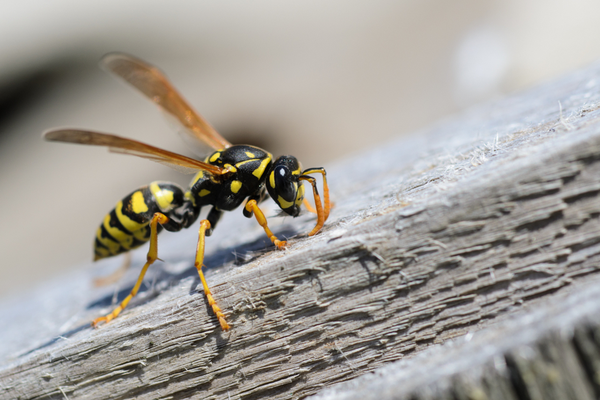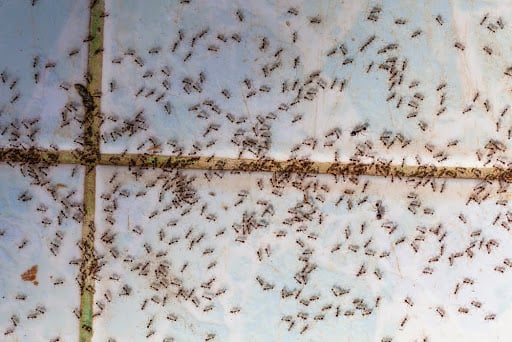Paper wasps, yellowjackets, and hornets all fit into the same category of wasp: social wasps. They all produce colonies every year with only the queen surviving winter. But despite their similarities, paper wasps, yellowjackets, and hornets differ in size, color, and where they build their nests.
Even though wasps can be beneficial to your space by eating other pesky pests, they are still aggressive stinging insects. There’s a good chance that if you’ve seen one flying around your yard or in your home, you don’t care if it’s a paper wasp, yellowjacket, or hornet… you just want it gone. However, knowing the difference between the three will help you get to the root of your problem… and then solve it!
Paper Wasps, Yellowjackets, and Hornets: What’s The Difference?
%20(1)%20(1).png?r=OxGSVWmwEIA=)
There are two categories of wasps: social and solitary.
- The wasps that swarm around you at your barbeque are social wasps.
- Solitary wasps aren’t aggressive and rarely sting.
Hornets, yellowjackets, and paper wasps are all social wasps. All three live in large colonies with one queen. They commonly have narrow wings that fold longitudinally, nests made of recycled wood fibers, and, of course, the ability to sting repeatedly. Although these wasps have traits in common, there are a few things that set them apart as well.
Paper Wasps
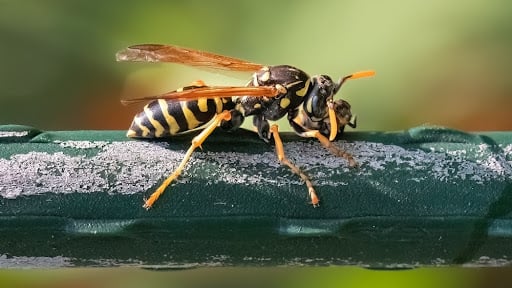
Paper wasps are about 1” long, have long legs, and range in color. They can be reddish-orange to black, sometimes with yellow highlights. They build umbrella-shaped nests that are often suspended from eaves or window casings. Paper wasp colonies number fewer than 100 wasps. When they fly, their long legs dangle.
Bald-Faced Hornets
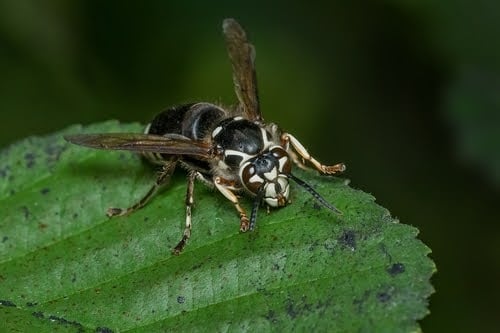
Bald-faced hornets are about ¾” long with black bodies and gray bands. Despite its name, the bald-faced hornet is more closely related to the yellowjacket than it is to the less common European hornet. The European hornets are much longer at 1.5” in length. They have brown bodies with yellow stripes. Hornets have massive, enclosed nests that hang from sturdy perches like tree branches. Hornet colonies contain over 100 wasps.
Yellowjackets
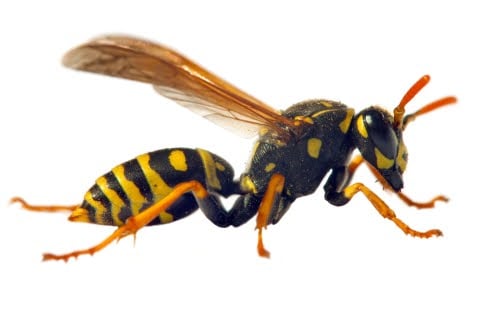
Yellowjackets are the smallest at ½” in length. They can be mistaken for honey bees because of the yellow markings on their bodies. Yellowjacket nests are enclosed like hornets’ nests are, but yellowjacket nests are found below ground. When they fly, yellowjackets tuck their legs into their bodies.
Why Do I Often Have Wasp Nests Near My Home?
If you frequently have wasp nests in your yard or around your home, it’s probably because you have a few of their favorite things, including:
- Ceilings and overhangs. This is where paper wasps prefer to build nests. They often choose a corner spot where their nest will be protected.
- Weathered wood. This is also a paper wasp favorite. They build their nests out of regurgitated wood fiber.
- Other pests. Wasps eat other pests. So, if wasps are setting up shop in your yard, it likely means there are plenty of other insects nearby as well.
- Indoor shelter. Wasps like to build their nests near accessible indoor shelter so their queens have a place to seek shelter in the winter. If your home has cracks or holes where wasps can sneak inside, then your yard may be their go-to nest-building spot.
Read our blog to learn more about how to get rid of wasp nests or contact Plunkett’s for quick, safe, and efficient wasp removal!
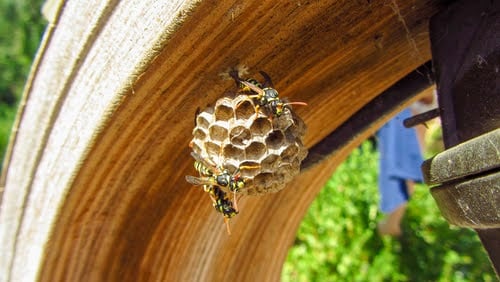
How Can I Avoid Wasp Stings?
Social wasps will attack you if you disturb their nests. In the late summer, they will even sting if you simply get too close. To avoid getting stung, do your best to not disturb a wasp nest. If you do so by accident, stay far away from the nest until the wasps have settled down. This is particularly difficult to do with yellowjacket nests since they are underground and difficult to detect. Try to keep an eye on where they are burrowing.
If you think you’re going to be around a wasp's nest, wear a long-sleeved shirt and pants to cover as much of your skin as possible. If a wasp lands on you, try to stay calm until it flies away. It’s also important to keep an eye on your sugary drinks! Wasps love pop, beer, and other sugary beverages. Remind your picnic guests to watch out for the stinging insects.
Rid Your Home of Wasps With Plunkett’s
Although wasps can rid your space of other pests, they can be a nuisance and they can be dangerous. The best way to avoid wasp stings is to get help from a professional pest control company like Plunkett’s. Our expert technicians can quickly and safely remove wasps to give you peace of mind this summer. If your yard is a popular hangout spot for wasps, get in touch with us right away.

